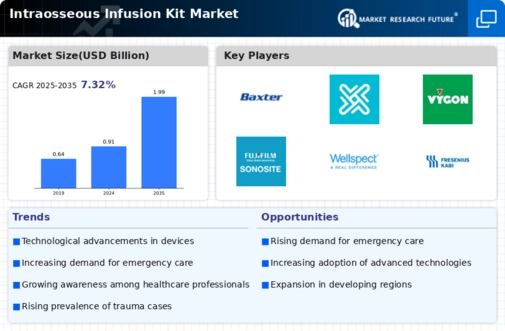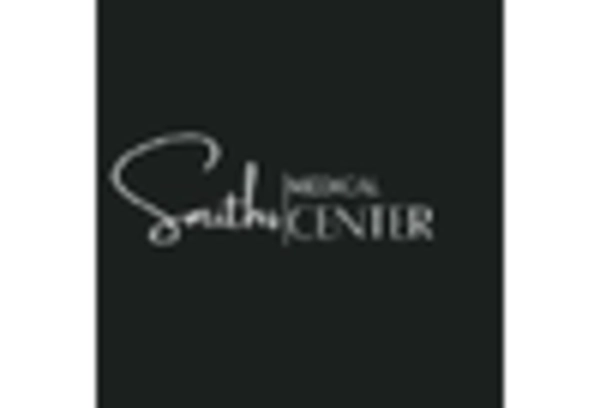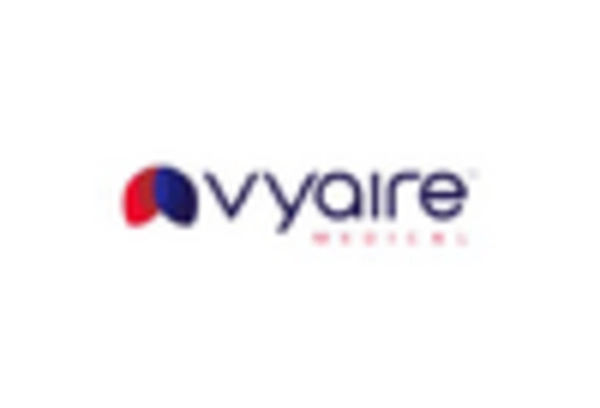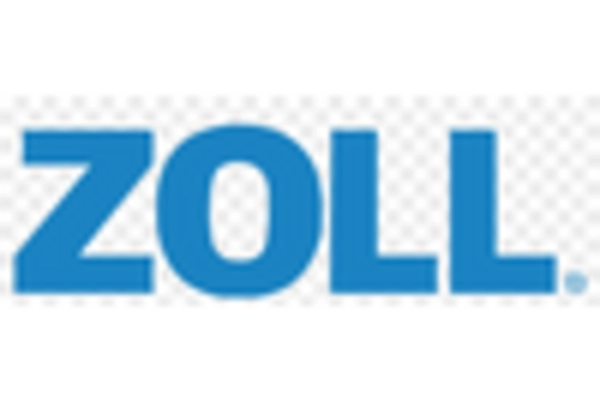Regulatory Support for Intraosseous Infusion Kit Market
The Intraosseous Infusion Kit Market is likely to benefit from favorable regulatory support that encourages the adoption of intraosseous infusion devices. Regulatory bodies are increasingly recognizing the importance of these kits in emergency care, leading to streamlined approval processes for new products. This supportive regulatory environment may facilitate innovation and the introduction of advanced intraosseous infusion technologies. Furthermore, as regulations evolve to emphasize patient safety and efficacy, manufacturers are motivated to enhance their product offerings. The anticipated regulatory changes could potentially lead to a more competitive market landscape, fostering growth and expansion opportunities for existing and new players in the industry.
Technological Advancements in Intraosseous Infusion Kit Market
The Intraosseous Infusion Kit Market is experiencing a surge in technological advancements that enhance the efficacy and safety of intraosseous procedures. Innovations such as improved needle designs and automated infusion systems are being developed, which may lead to better patient outcomes. For instance, the introduction of devices that allow for real-time monitoring of infusion rates could significantly reduce complications associated with intraosseous access. Furthermore, the integration of smart technology into infusion kits is likely to streamline emergency medical responses, making them more efficient. As healthcare providers increasingly adopt these advanced technologies, the market is projected to grow, with estimates suggesting a compound annual growth rate of over 8% in the coming years.
Increased Awareness and Training in Intraosseous Infusion Kit Market
The Intraosseous Infusion Kit Market is benefiting from heightened awareness and training initiatives aimed at healthcare professionals. As the importance of rapid access to vascular access in emergencies becomes more recognized, training programs are being implemented to educate medical personnel on the use of intraosseous infusion techniques. This increased focus on education is likely to enhance the proficiency of practitioners, thereby improving patient care. Reports indicate that regions with robust training programs have seen a marked increase in the utilization of intraosseous infusion kits, suggesting a direct correlation between training and market growth. Consequently, the market may witness a steady rise as more healthcare facilities prioritize training and awareness.
Rising Demand in Emergency Medicine within Intraosseous Infusion Kit Market
The Intraosseous Infusion Kit Market is witnessing a rising demand driven by the critical role of intraosseous access in emergency medicine. In situations where intravenous access is challenging or time-consuming, intraosseous infusion serves as a vital alternative, particularly in trauma and cardiac arrest scenarios. The increasing incidence of emergencies requiring rapid medical intervention is propelling the demand for intraosseous infusion kits. Market analysis indicates that the emergency medical services sector is expected to account for a significant share of the market, with projections suggesting a growth rate of approximately 10% over the next five years. This trend underscores the essential nature of intraosseous infusion in saving lives during critical situations.
Growing Investment in Healthcare Infrastructure and Intraosseous Infusion Kit Market
The Intraosseous Infusion Kit Market is poised for growth due to increasing investments in healthcare infrastructure. Governments and private entities are allocating substantial resources to enhance emergency medical services and hospital facilities, which may include the procurement of advanced intraosseous infusion kits. This trend is particularly evident in regions where healthcare access is being prioritized, as improved infrastructure is essential for effective emergency response. Market forecasts suggest that as healthcare facilities expand and modernize, the demand for intraosseous infusion kits will likely rise, contributing to an overall increase in market size. The focus on building robust healthcare systems is expected to create a favorable environment for the growth of the intraosseous infusion kit market.


















Leave a Comment